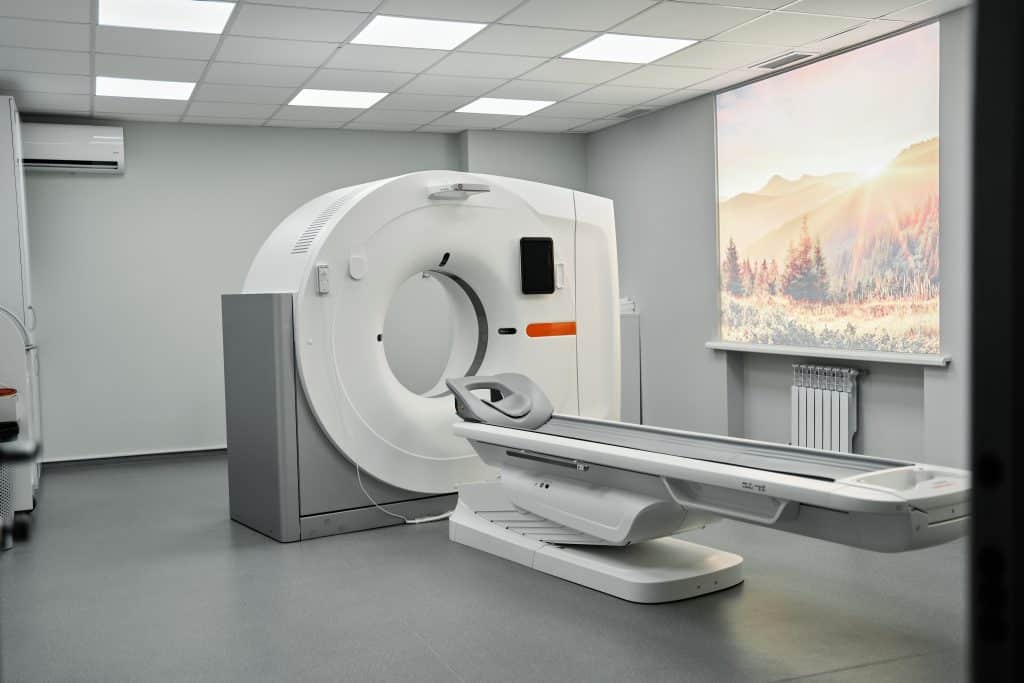Medical Chillers
How Do MRI Chillers Work?
Magnetic resonance imaging, or MRI, is a diagnostic technique used by complex, powerful medical machines of the same name. These machines work by emitting radio waves and recording the resonant results. This allows medical staff to highlight the internal abnormalities in patients and target specific injuries of concern.
The MRI process requires a great deal of power to operate reliably, which carries significant thermal demands. Without specific cooling measures, the internal components would quickly overheat, causing potentially irreparable damage to the MRI machine and leaving its users without a vital diagnostic tool.
Malfunction of an MRI machine can be highly detrimental to a medical center’s business and reputation, no matter the size of the facility. The revenue stream can be adversely affected in the case of machine failure. Patient satisfaction, reliability and revenue flows are factors which can make or break a running business.
What are MRI Chillers and How Do They Work?
While traditional HVAC cooling may keep an office or hospital comfortable for patients, the temperatures reached by an MRI scanner mid-use pose a problem that even the most efficient air conditioning system won’t solve.
MRI chillers are purpose-built components and systems that are made to react to the demands of sudden temperature changes, and designed to keep those changes within a safe range of tolerance. Depending on the model in use, an MRI chiller may use condensed helium, injected water, air jets, or a hybrid of several applications to keep an in-use MRI machine from overheating.
The magnet in the MRI machine is the component which produces strong magnetic fields for resonance imaging. To ensure accurate imaging, the magnet needs to be constantly maintained at a temperature of -270 degrees celsius.
MRI chillers have an inbuilt device called a ‘cold head’. This condenses the helium back into its liquid form after the MRI magnet is cooled with a specialized compressor unit called the cryocooler.
Another series of heat exchangers help to cool the cryocooler. This is imperative as the MRI machine will overheat if the temperature of the helium increases. Without the appropriate cooling in place, the helium will vaporize and leak through the safety valves, leading to irreparable damage of the magnet.
How Do MRI Chillers Help?
The dedication and expertise of medical professionals rely on trustworthy diagnostic methods and tools. Without an MRI chiller, an MRI machine would keep temperatures that would shorten or even end the lifespan of a valuable piece of equipment prematurely.
Besides longevity, unregulated heat from an MRI machine could pose a threat to patient well-being, cause a facility HVAC sensor to malfunction, or demand an outsized financial burden from inefficient electricity use.
While these consequences may not be dire in the short term, the investment in an MRI machine is crucial, and without a functioning machine, nearly every aspect of medical care at a facility is negatively impacted.
How Do I Find the Right MRI Chiller?
Much like any specialized component, an MRI chiller must align with the size, power, and usage of the machine it supports. Unlike some medical equipment enhancements, the “something is better than nothing” adage doesn’t apply here.
A chiller must be able to meet the demands of the MRI machine it is incorporated into. Relying on a professional MRI chiller provider to assess, recommend, install, and maintain your MRI chiller is extremely important.
Remember, using one isn’t a matter of enhancing an existing machine. It is a necessary step to ensuring both its operation and results remain safe, functional, and reliable.
